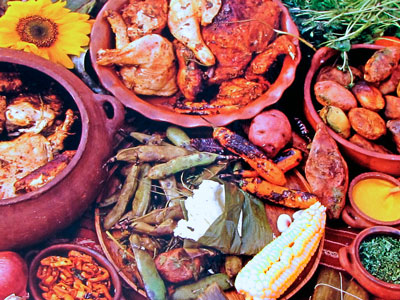
Discovering Inca Cuisine in Cusco, Peru
Learn about Incan cuisine and what elements of it you can still try today in Cusco, Peru...
From the imperial capital of Cusco, the Inca civilization ruled over vast swathes of land from the 13th to 16th century. Alongside the ruins which mark Cusco and the surrounding Sacred Valley, many aspects of the Incas’ culture and traditions have survived the centuries following the Spanish conquest.
When it comes to cuisine, the hastily assembled earthen ovens which throw plumes of smoke into the air each time a holiday comes around are a clear throwback to the Cusco’s pre-Columbian days. These ovens, known as huatias, are used to prepare different tubers to eat with Andean cheese and a variety of spicy pepper sauces. Peru is the birthplace of the potato, and boasts thousands of varieties. Today, you can still eat the yellow ullucu with fuschia dots, the arracacha, the purple potatoes, and other Incan legacies. Huatias are also used for Pachamanca, which added to the tubers guinea pig, llama, and alpaca. Other meats that the Inca had at their disposal include wild deer and the rabbit-like viscacha. Modern-day Pachamanca has a much wider list of meats to choose from, so generously herbed chicken, lamb, and beef are often included.
Roast guinea pig is the most famous Andean dish; it was a delicacy in Incan times and is still a local staple for special occasions to this day. In fact, we offer cuy on the menu at Plus.
Meat was often dried for storage, as were fish, freshwater algae, and potatoes. Dried alpaca was a product known as charqui, from which we get the word jerky in English. Dried potatoes are known as chuño or moraya, depending on the variety. You can still find all of these products in the city market today, as they form an important part of local cuisine.
Fecha de Publicación: 02/08/2014

